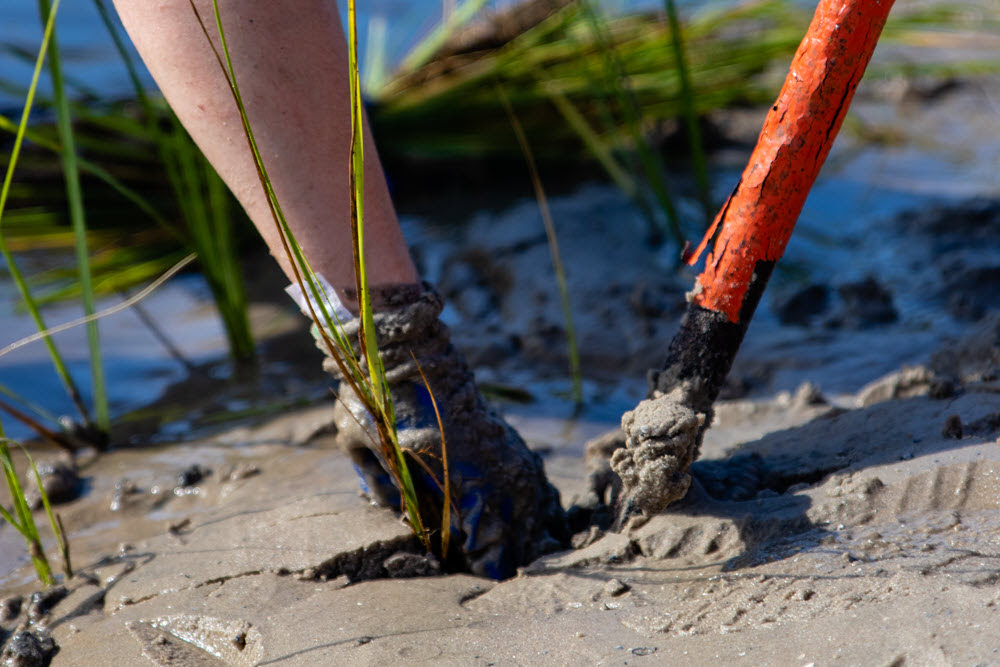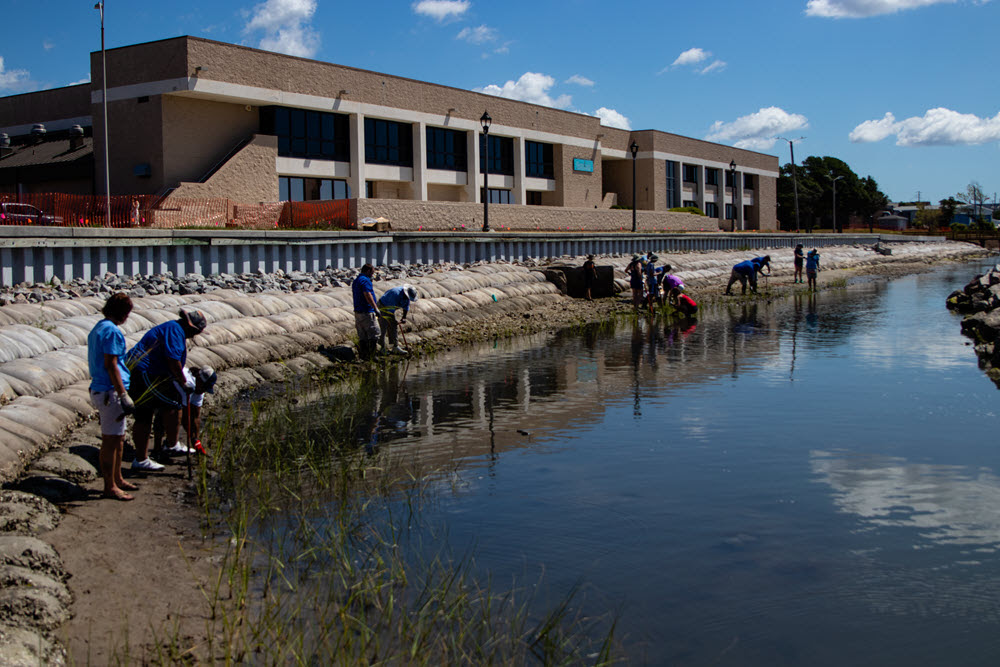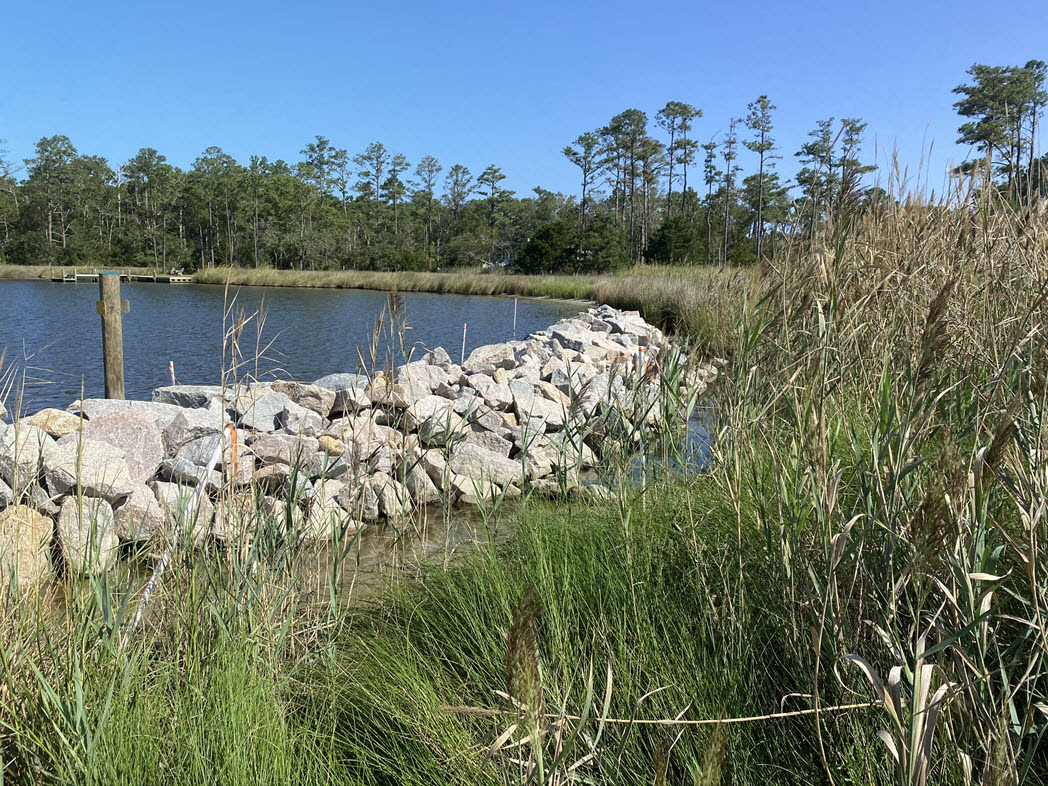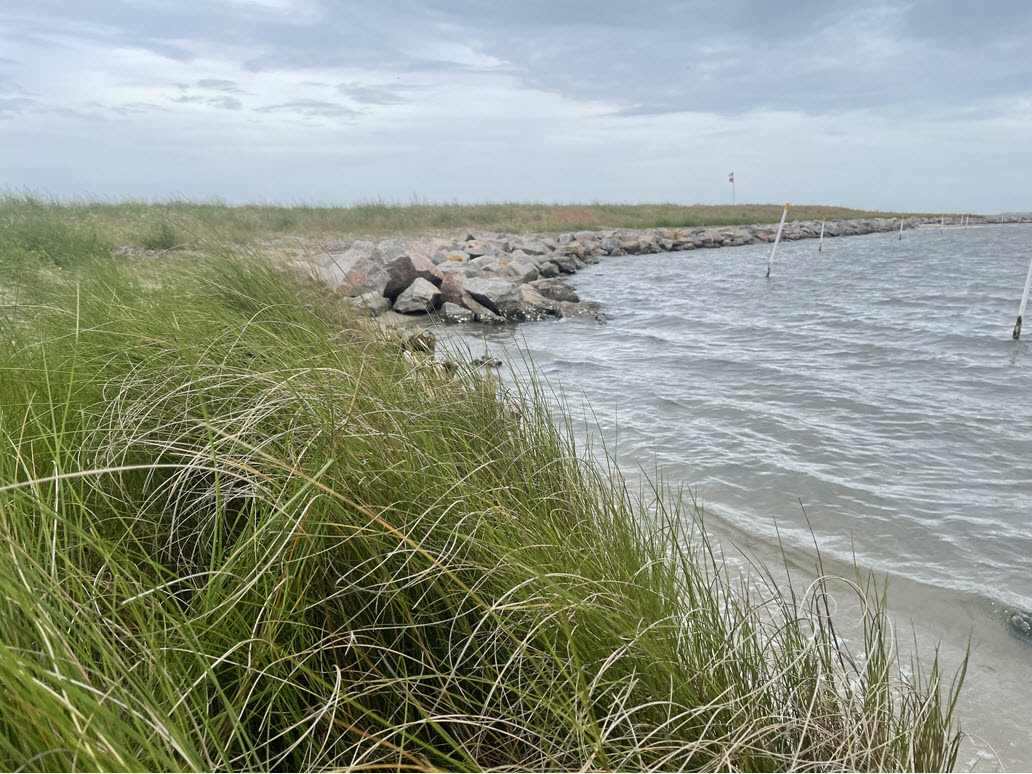
OCEAN — The North Carolina Coastal Federation says it has completed several large-scale living shoreline projects in partnership with local officials in Carteret and Pamlico counties.
The nonprofit federation said it had partnered with Carteret Community College, Carteret County, the towns of Oriental and Pine Knoll Shores, as well as with community volunteers, students and contractors to complete the work.
Supporter Spotlight
More than 100,000 salt marsh and wetland grasses were planted, including smooth cordgrass, saltmeadow hay, black needlerush, bitter panicum and sea oats. The plants, purchased from Garner’s Landscaping & The Plant Stand Inc., Lumber River Native Plants and Coastal Transplants LLC will help to reduce shoreline erosion, improve coastal water quality, and provide valuable habitat for wildlife, officials said.
“These living shoreline projects demonstrate effective, resilient, affordable, and environmentally friendly shoreline stabilization approaches that should be considered before installing a bulkhead or seawall,” said federation Coastal Scientist, Dr. Lexia Weaver.
Below is an overview of the recent plantings:

Carteret Community College
With coordination support from Carteret Community College and Ryan Mroch, a Boy Scout from Troop 446 and Sea Scout Ship 7730, over 26,000 plugs of smooth cordgrass and saltmeadow hay were planted by 114 volunteers along the college’s Bogue Sound shoreline in Morehead City throughout one week in May. The plantings, along with the 1,250-foot-long rock sill built by T.A. Loving earlier this year, will help to stabilize the shoreline in front of campus by reducing the effects of waves.
Students from Morehead City Middle School and Teacher’s Pet participated in the plantings, as well as staff from Carteret Community College, Parker Offshore LLC and Big Rock Sports LLC. Additionally, several local Scouts, members from Unitarian Coastal Fellowship in Morehead City and other community volunteers joined in on the effort. The project was supported by funds from the Golden LEAF Foundation, the National Fish and Wildlife Foundation Emergency Coastal Resilience Fund, the Federal Emergency Management Agency and the North Carolina Community College System.
Supporter Spotlight

Whittaker Pointe, Oriental
Through a partnership between the federation and the town of Oriental, 6,200 additional marsh grasses were planted by Restoration Systems LLC in May. The grasses were planted landward of a 3,060-foot rock and oyster shell bag sill designed by Quible & Associates P.C. with structural engineering support from Gary Greene Engineers, and constructed by Carolina Marine Structures. The Whittaker Pointe peninsula serves as the primary defense for almost 300 town buildings, businesses and residences against waves and surge from the Neuse River during storms and routine high wind events. The purpose of this new living shoreline is to protect the peninsula from future storm damage and restore lost marsh habitat.
Funding for this project came from the National Fish and Wildlife Foundation National Coastal Resilience Fund, the Gold LEAF Foundation, state Department of Environmental Quality and the United States Department of Agriculture Natural Resources Conservation Service Emergency Watershed Protection Program.

White Point, Atlantic Harbor
In Atlantic Harbor, 70,198 grasses were planted landward of a 1,720-foot living shoreline made of granite rock and wave attenuators. This living shoreline was constructed in conjunction with the dredging of the harbor entrance channel by Carteret County. In addition to the shoreline stabilization, fisheries habitat and water quality benefits, the living shoreline also prevents the dredge spoil material on White Point from entering the entrance channel to Atlantic Harbor, which has been a significant navigation issue for the past 20 years. Fishing boats are now able to enter and exit the harbor without as many water depth issues, allowing this small fishing community to thrive economically. This project was made possible through funding from the North Carolina Department of Justice Environmental Enhancement Grant Program and the National Fish and Wildlife Foundation National Coastal Resilience Fund.

Pine Knoll Shores
In early May, members from Conservation Corps North Carolina worked alongside federation staff to plant 2,800 plugs of smooth cordgrass along the shoreline at the Pine Knoll Shores Town Hall. These plantings occurred landward of a 460-foot oyster reef built by Restoration Systems LLC using bags of recycled oyster shells. This project was a partnership between the federation and the Town of Pine Knoll Shores and was supported by the state Department of Justice Environmental Enhancement Grant Program and the North Carolina Land and Water Fund.
Private Shorelines
In addition to these large-scale living shorelines, several plantings also took place along private shorelines by local contractors and federation staff. On World Oceans Day, which was June 8, 2,000 grasses were planted with the Ocean Club Community in Indian Beach in partnership with the North Carolina Aquarium at Pine Knoll Shores.
To learn more about the federation’s living shoreline projects, visit nccoast.org/livingshorelines.
Interested in building a living shoreline on your property? Send an email to livingshorelines@nccoast.org for more information.
For more information, contact Weaver at lexiaw@nccoast.org, or 252-393-8185







